Reviews
Anthony Mann
USA, 1949
Credits
Review by Briallen Hopper
Posted on 28 January 2013
Source Warner DVD
Categories Noir Mann
Border Incident can be thought of as a bridge between Anthony Mann’s noirs and his westerns. It came out the year after Raw Deal and the year before Winchester ‘73, and it tells a story of cops, crops, and illegal immigration on the Mexico-US border.
The film’s noir beauty has been noted: its chilled silver-black portraits of men and machines; its slow vivid scenes of violence turning victims’ faces into haunting once-human grotesques. It extends this noir imagery into western territory, weaving a web of corruption that traps braceros on both sides of the border, and shutting the open West into a series of suffocating spaces. Like a coyote, the film smuggles its viewers over the border without letting us see much of where we are going. Our faces are pushed far too close to the canvas tarp stretched above the contraband bodies that are packed in the back of a truck like cargo. We blink when signaling lights in the desert blaze directly into our eyes and fill the screen with a flash of white. The film forces us under the harrow, sucks us down into the quicksand, and marches us into the Valley of Death where braceros are robbed and killed.
But despite its darkness and some searing scenes of torture that still pack a shock in the era of Zero Dark Thirty, Border Incident is not fully a noir, and it is not just a noir-western either. In the DVD commentary, Dana Polan argues that it is a police procedural, which it clearly also is. But as much as anything, it is a message movie, and a great one.
Like Gentleman’s Agreement, which came out two years before, Border Incident is about a handsome leading man who goes undercover to expose injustice: a man whose incorruptible honor is as clearly defined as his cheekbones, and who can’t help doing a little bit of preaching or community organizing even when his role-within-a-role doesn’t quite call for it. Like Gregory Peck, Ricardo Montalbán plays a privileged outsider who takes on a stigmatized identity, though in Border Incident the stakes are quite a bit higher (and not just because Border Incident was Montalbán’s first starring role). Peck played a WASP journalist posing as a Jew to expose genteel anti-Semitism in the Connecticut suburbs; Montalbán plays a member of the Policía Judicial Federal, the “Mexican FBI,” who poses as a migrant worker to expose abuse and murder by coyotes, employers, and robbers. Montalbán doesn’t have to fake his ethnicity, but he does have to fake his way around men with guns, and he can’t hide the softness of his middle-class hands.
It is not spoiling much to say that the goodness of Montalbán’s character Pablo Rodriguez, and of his FBI counterpart Jack Bearnes (George Murphy), and of the Mexican and US government officials, and of the resilient and resourceful braceros, notably the sensitive Juan Garcia (James Mitchell), is never really in doubt. This is often not enough to protect them, but it is enough to unsettle some of the logic of noir and to replace it with the logic of social reform. In a noir message movie, as in a standard noir, the good guys may not survive, and their deaths may not be pretty. But (and this is the important difference) the good guys will stay good, and the basic distinction between good and bad will never be in doubt. Beyond that, in a message movie the goodness of the good guys is typically fleshed out by human connections that cross the boundaries of class, ethnicity, or nation; connections that create unexpected spaces for feeling, and fluctuating dynamics of power. Thus, at the beginning of the film, Pablo views Juan as a simple peasant to be protected; later, they will become friends when they are exhausted co-workers in the California fields; in the end, Pablo will learn that he needs Juan more than he knew.
Like any good noir-western-procedural, Border Incident is about a maze of evil, a Wild West, and the rule of law, but like any good message movie it primarily presents the problem of illegal immigration as a humanitarian one. The problem with the “illegal entrants,” we learn in the first scenes, is not so much that they enter the United States illegally; it is that they are often exploited and hurt after they arrive. The movie begins with aerial images of neat California crops, but quickly shows us a border murder in shocking detail. “It is this problem of human suffering and injustice about which you should know,” the narrator tells us. “These brutal murders of defenseless braceros—the latest of a number along the border—spur two governments to new and drastic efforts.”
In a town near the border, four symmetrical government agents meet—two Mexican, two US—and one of the Americans asks a still-relevant question: “If they cross illegally, what is our responsibility to them?” His question is not rhetorical, and it turns out that “our responsibility” includes protecting their life and property. A Mexican official explains, “Some of my people, they are not well-educated. They allow themselves to be smuggled across.” The US official replies, “I know. And some of my people pay them half wages, conceal them from arrest, make them live in fear, and send them back into the desert to be robbed and killed.” The criminals in this story are always coyotes and American businessmen; the braceros are never at fault. And as it turns out, the worst villains of all are the rich white men who profit from cheap illegal labor, especially the smooth and businesslike Owen Parkson (Howard da Silva), who reaps the profits of what is effectively a slave trade while outsourcing the actual physical violence involved to poorer Americans and Mexicans. Towards the end of the film, an underling insists that Parkson come see the blood behind the money, in words that should still be echoing in the ears of an American audience: “For once I want you to see what your dirty work looks like.”
Six and a half decades later, it’s easy to see the political limitations of the film, which never calls into question the inherent inequalities of the Bracero Program, or the worth of the artificially-irrigated agribusiness that it supports. But despite the increasing urgency of immigration issues today, including exactly the same issues of unscrupulous smugglers in Mexico and exploitative employers in the US, it’s hard to imagine Border Incident being re-made by a major studio now with anything resembling its unapologetically pro-Mexico, pro-undocumented-worker, anti-Anglo-capitalist stance. And it’s equally hard to imagine a contemporary major-studio message movie starring a Latino actor as a heroic Mexican agent, not as an outlaw, a victim of injustice, or a secondary sidekick. Montalbán’s Pablo Rodriguez is the most charismatic portrayal of a Mexican cop in a US film until Benicio del Toro in Traffic, but unlike del Toro, Montalbán is the undisputed star, carrying both the film and its message.
Despite spending over half a century in Hollywood, Montalbán never applied for US citizenship. At a 2004 banquet for the Nosotros Foundation, a group he started to support Latinos in entertainment, he said, “Mexico is my mother; the United States the best friend I will ever have.” For all its noirish twists and dismemberments, Border Incident depends on the surprising certainties of unlikely friendships: on the tenderly intimate care between a peasant and a cop; on the loyalty of a friend who insists on witnessing the terrible death he is powerless to prevent; on the mutual regard of Mexico and the USA, who award high honors to the agents of each other’s governments; and on the desperate camaraderie of the braceros, who bravely defend each other to the death in the Cañon de la Muerte.
More Noir Mann
-
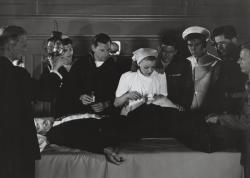
Strangers in the Night
1944 -
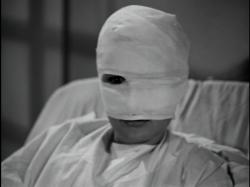
Strange Impersonation
1946 -
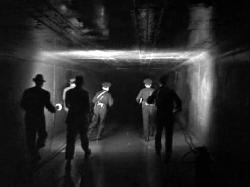
He Walked By Night
1948 -
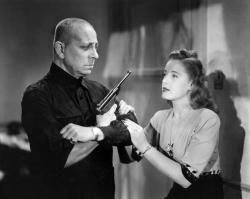
The Great Flamarion
1945 -
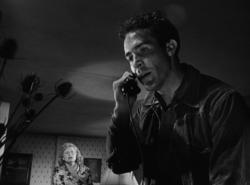
Border Incident
1949 -
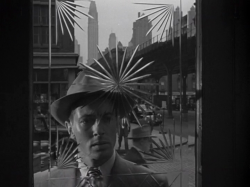
Side Street
1950 -
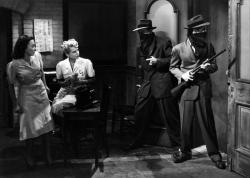
Railroaded
1947
We don’t do comments anymore, but you may contact us here or find us on Twitter or Facebook.



